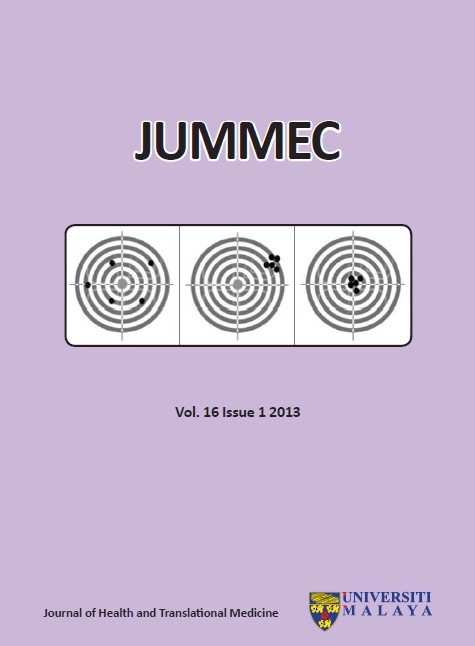DETERMINING THE MATERNAL CHARACTERISTICS THAT PREDICTS THE ADVERSE OUTCOMES FOR PATIENTS WITH PREECLAMPSIA
Abstract
BACKGROUND:
Preeclampsia is a major cause of maternal morbidity and mortality worldwide. Despite the advances made in the field of obstretics, the ability to predict maternal and neonatal outcome in pregnant women with pre-eclampsia remains under developed.
OBJECTIVE:
To determine the clinical characteristics that could be used as a prognostic tool that would aid in clinical assessments and interventions, which in turn will reduce the rate of mortality in pregnant women with preeclampsia.
METHODS:
This nested case control study enrolled 40 subjects diagnosed clinically with pre-eclampsia. Using logistic regression, we determined the cilinical characteristics that could be used as a prognostic tool.
RESULTS:
Maternal and gestational age were strong predictors that indicate poor prognosis in severe patients with preeclampsia at <37 weeks gestation. The scoring card models developed in this study had good calibration and discrimination value with a p > 0.05 and AUC 0.850 (95% CI 0.732 to 0.969). Subjects with total scores of 0, 1, and 2 had 3.1%, 27.6%, and 80.6% poor prognosis, respectively.
CONCLUSION:
Maternal age and gestational age are strong predictors for poor clinical outcomes in patients with preeclampsia.
Downloads
Downloads
Published
Issue
Section
License
All authors agree that the article, if editorially accepted for publication, shall be licensed under the Creative Commons Attribution License 4.0 to allow others to freely access, copy and use research provided the author is correctly attributed, unless otherwise stated. All articles are available online without charge or other barriers to access. However, anyone wishing to reproduce large quantities of an article (250+) should inform the publisher. Any opinion expressed in the articles are those of the authors and do not reflect that of the University of Malaya, 50603 Kuala Lumpur, Malaysia.


